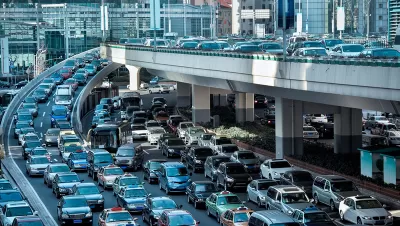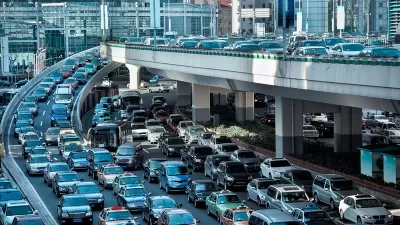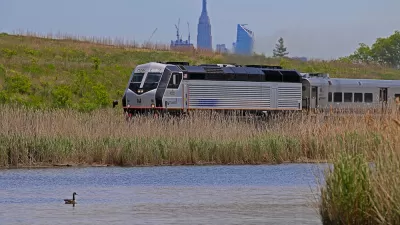Unsurprisingly, American workers whose commutes have been reduced or eliminated by new remote work arrangements are spending more time on rest, leisure, and childcare activities.

With the rise of remote work during the COVID-19 pandemic leading to a seismic shift in commuter behavior, Americans are, on aggregate, spending 60 million fewer hours commuting every day. So what is everyone doing with all that extra time? David Dam, Davide Melcangi, Laura Pilossoph, and Aidan Toner-Rodgers sought to find out, explaining their results in Liberty Street Economics.
According to the article, “Using detailed data from the American Time Use Survey (ATUS), we find that employed individuals allocate their saved commute time toward leisure activities and sleeping, while reducing overall work hours.” The researchers found a “substantial fall in time spent working,” with the decrease only partially offset by the increase in work-from-home hours. The study also found that “notable increases in leisure time and sleeping,” particularly among younger Americans, “who reported spending more time at social events, eating at restaurants or bars, and exercising” and spent more time with people outside their own households than older Americans, a fact likely reflective of higher COVID-19 risks for older people.
The researchers conclude that “The findings lend credence to the various reports on employees’ preferences for flexible work arrangements, given that cutting the commute enables people to spend their time on other activities, such as childcare or leisure.”
FULL STORY: What Have Workers Done with the Time Freed up by Commuting Less?

Planetizen Federal Action Tracker
A weekly monitor of how Trump’s orders and actions are impacting planners and planning in America.

Maui's Vacation Rental Debate Turns Ugly
Verbal attacks, misinformation campaigns and fistfights plague a high-stakes debate to convert thousands of vacation rentals into long-term housing.

San Francisco Suspends Traffic Calming Amidst Record Deaths
Citing “a challenging fiscal landscape,” the city will cease the program on the heels of 42 traffic deaths, including 24 pedestrians.

Amtrak Rolls Out New Orleans to Alabama “Mardi Gras” Train
The new service will operate morning and evening departures between Mobile and New Orleans.

The Subversive Car-Free Guide to Trump's Great American Road Trip
Car-free ways to access Chicagoland’s best tourist attractions.

San Antonio and Austin are Fusing Into one Massive Megaregion
The region spanning the two central Texas cities is growing fast, posing challenges for local infrastructure and water supplies.
Urban Design for Planners 1: Software Tools
This six-course series explores essential urban design concepts using open source software and equips planners with the tools they need to participate fully in the urban design process.
Planning for Universal Design
Learn the tools for implementing Universal Design in planning regulations.
Heyer Gruel & Associates PA
JM Goldson LLC
Custer County Colorado
City of Camden Redevelopment Agency
City of Astoria
Transportation Research & Education Center (TREC) at Portland State University
Jefferson Parish Government
Camden Redevelopment Agency
City of Claremont





























